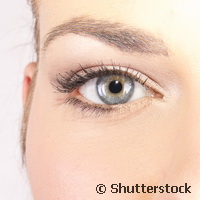Finding and treating the cause of inherited blindness
European scientists have made a major breakthrough in the treatment of inherited retinal diseases. Many disorders which cause blindness are due to mutations in genes that are expressed in the photoreceptor cells of the retina which process light. The European AAVEYE ('Gene Therapy for Inherited Severe Photoreceptor Diseases') project set out to develop gene transfer techniques for the photoreceptor neurons in the retina using a virus (adeno-associated virus, AAV) as a form of transport. The team focused on pre-clinical proof-of-concept (POC) gene therapy strategies to tackle these debilitating diseases. Over the course of three years, an international consortium from the UK, Switzerland, Italy and Estonia worked on the project coordinated by Fondazione Telethon TIGEM, in Italy. With EU-funding of nearly EUR 3 million the subsequent research involved specialists in the fields of AVV-mediated gene transfer to the retina, the pathogenesis of photoreceptor degeneration, and design of molecular diagnostics for inherited retinal diseases. Professor of medical genetics, Alberto Auricchio from TIGEM who has been leading the project says: 'The main highlight of the project has been the identification of a vector platform for retinal photoreceptor gene therapy. This will help people with blinding conditions which require gene therapy directed to the photoreceptors.' During the course of the project, the AAVEYE team also demonstrated that the viral vector based on adeno-associated virus serotype 8 (AAV2/8) is the most efficient way to transfer genes to photoreceptors of rodents and large animals. They also developed a way of significantly slowing down the degeneration of photoreceptors and restoring retina function. In addition, the project has generated a considerable amount of pre-clinical data, which will be used for future clinical trials. The professor explains: 'A clinical trial is not a simple endeavour; you need a significant amount of funding. Once we have new funding opportunities to cover a clinical trial for these rare disorders, then we will be ready to start the next stage.' Meanwhile Professor Auricchio continues to work on gene therapy approaches for retinal degeneration, and is involved in the coordination of a clinical trial (which is also funded by the European Union) for a rare inherited disease called mucopolysaccharidosis VI.For more information, please visit: TIGEM http://www.tigem.it/en AAVEYE project factsheet
Countries
Switzerland, Estonia, Italy, United Kingdom



